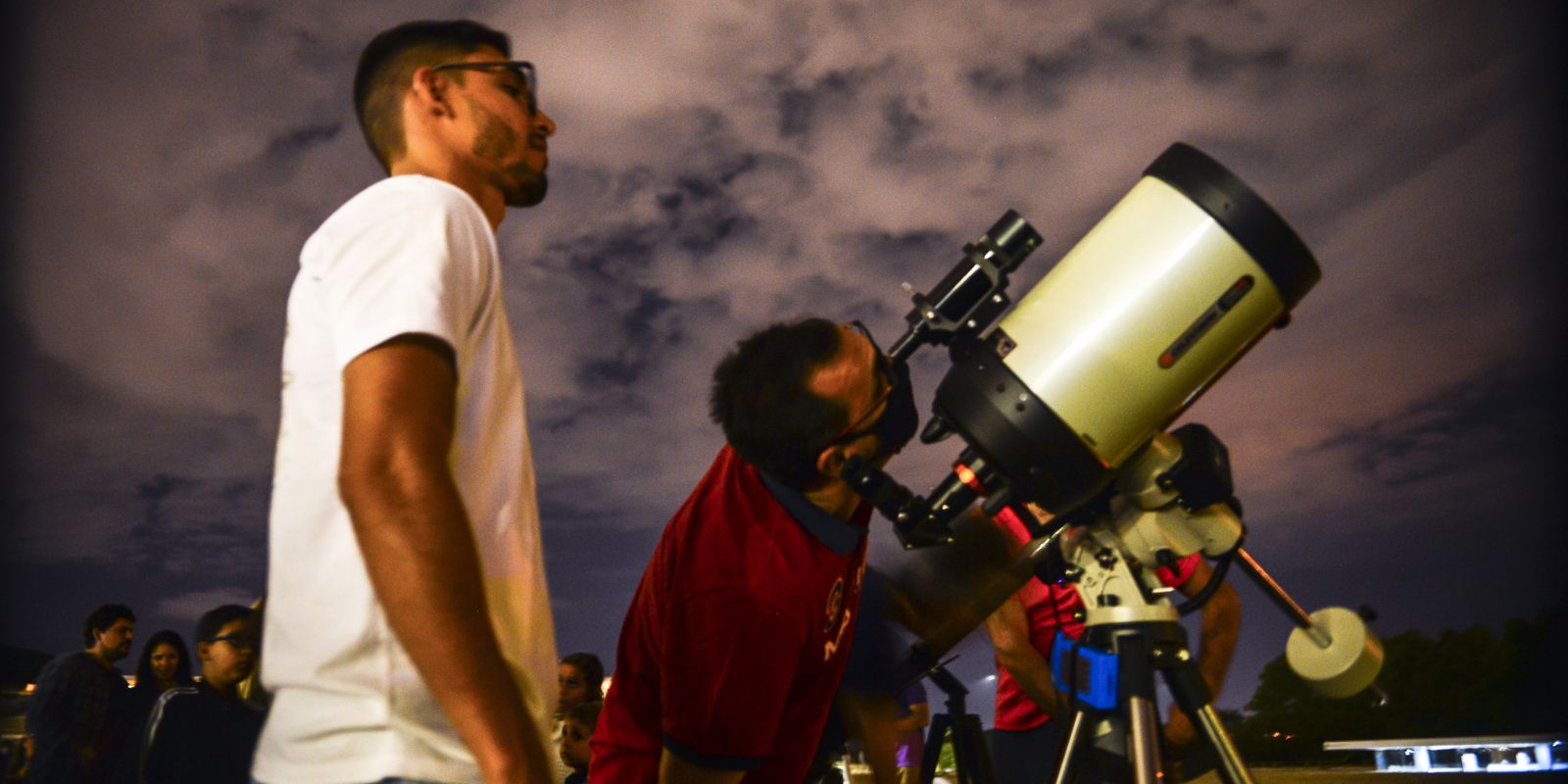Starting on September 22, those interested in astronomy will be able to observe, here in the Southern Hemisphere, the passage of comet C2023 A3 (Tsuchinshan-Atlas) past Earth, which is being called the Comet of the Century, because of the chance of having the greatest luminosity since Hale-Bopp, which shone in the sky in 1997.
The comet – a phenomenon formed by dust, rocks, ice and gases – was discovered in early 2023 by the Zijinshan Astronomical Observatory, also known as the Purple Mountain Observatory, and the Asteroid Terrestrial-impact Late Warning System (Atlas) telescope in South Africa.
Astronomer Filipe Monteiro, from the National Observatory, an agency linked to the Ministry of Science, Technology and Innovation, explains that, from August until the last week of September, the comet is “very apparently close to the Sun”, which will leave it overshadowed by the brightness of the central star of the Solar System, making it difficult to observe.
“Starting in the last week of September, on the 22nd, the comet will be visible at dawn, but will once again be very close to the Sun between the 7th and 11th of October, but will then move away again. From then on, the comet will be visible just after sunset,” explains the astronomer.
According to Monteiro, the so-called perihelion (closest approach to the Sun) will occur on September 27, at a distance of 0.391 Astronomical Units (AU), which is equivalent to almost 58.5 million kilometers.
The comet’s closest approach to Earth will occur on Sunday, October 13, when it will be at a distance of 0.472764 AU, or 70.7 million kilometers.
Observation
“It is not possible to confirm whether the comet can be seen with the naked eye, given that the brightness of these objects can be unpredictable and, therefore, it may be necessary to use other instruments, such as binoculars and telescopes”, explains the specialist from the National Observatory.
“Observers should look towards the western horizon, in the same direction as the sunset. The comet will be visible just before dawn at the end of September and just after sunset, when it will transit through the constellations of Virgo (in September), Serpent and Ophiuchus (October),” advises Monteiro.
“The biggest difficulty will be finding a place with a clear western horizon, given that the comet is very low in the sky, at an altitude of up to 30 degrees,” he adds.
According to the astronomy app Star Walk, C2023 A3 can reach magnitudes as low as -3 – the lower the magnitude, the brighter the luminosity. For comparison, in 1997, comet Hale-Bopp, one of the most observed of the 20th century, had a peak magnitude of -1.8.
THE observation of the Comet of the Century is recorded in the guide to the main astronomical phenomenaprepared by the Valongo Observatory, of the Federal University of Rio de Janeiro (UFRJ).
In addition to explaining astronomy and events, the publication allows you to follow, for example, the eclipse schedule, planetary approaches and meteor showers.

















